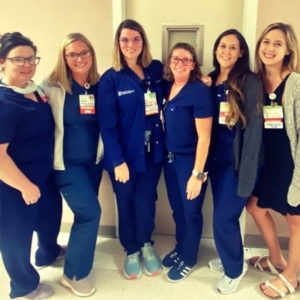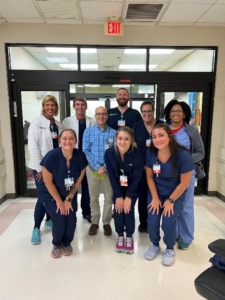Mobile Infirmary in Alabama Improves Sepsis Bundle Compliance and Reduces Sepsis Mortality
August 11, 2023
for Hospital/Pharmacy/Home Health Staff
Mobile Infirmary in Mobile, Alabama, is the largest non-governmental hospital in Alabama, with 669 licensed beds and 14 beds at Saraland Freestanding Emergency Department. In early 2016, a multidisciplinary committee was initiated to focus on the sepsis core measure and compliance after identifying the need for improvement.
The committee approved nurse/pharmacy/ provider education, order sets, and best practice alerts in the EMR. All involved staff and physicians received extensive sepsis education at the beginning of the sepsis initiative, as well as ongoing education. The nurse-driven process started in May 2016, accompanied by a sepsis checklist for ED staff. This checklist guides the staff through the process and recommends antibiotics, which is useful when discussing the sepsis screening and findings with the physician.
The nurse-driven process allowed the nurse to order the lactic acid and blood cultures without a physician’s order. With the nurse-driven process, sepsis compliance increased. In January 2017, Mobile Infirmary hired a dedicated Rapid Response Team (RRT), a resource to the Emergency Room for sepsis screening and ran the Inpatient Code Sepsis process.

A Point of Care (POC) testing lactic acid was initiated to decrease turnaround time. Before POC testing, the turnaround time was three hours to obtain results. Now, results are available within three minutes, dramatically impacting the timing of patient antibiotic administration. The RRT also receives best practice alerts for any ER patient with SIRS. They follow these patients in real time through the ER process. The Rapid Response RN will alert the charge nurse if the patient requires additional steps. If the patient does not meet the sepsis core measure in the ER but is diagnosed with a source, they follow them for the next twenty-four hours in case they meet inpatient sepsis criteria. If they meet the criteria, RRT will initiate the process. In addition, the RRT has a dedicated hospital phone that allows providers and staff members to communicate directly with them about the sepsis core measure requirements. In 2019, Mobile Infirmary implemented the Modified Early Warning System (MEWS) to assist with sepsis and decrease ICU code blues.
Currently, Mobile Infirmary has a sepsis checklist utilized mostly by the Emergency Department staff, which allows the nurse to check off bundle elements as it occurs and a resource for handoff. The Rapid Response Team manager runs a best practice advisory report daily to monitor compliance. If non-compliance is found, it is reported to the unit manager to educate staff. The hospital has ongoing education annually. Sepsis compliance and metrics are discussed in all medical staff committees so that our providers are involved with compliance.
For the first three and half years of our process, multidisciplinary team meetings attended by nursing, physicians, lab, IT, pharmacy, quality and RRT were held monthly to discuss any sepsis fall outs and opportunities for improvement. Since COVID, the hospital changed its follow-up on fall outs to a more real-time conversation or at least within 24-48 hours of the patient being in the hospital.
Currently, the Core Sepsis Bundle compliance is 78%. The challenge continues to be fluid resuscitation. Mobile Infirmary has done a significant amount of provider education related to resuscitation and continuous monitoring, and education remains a focus for continued success.
As of March 2023, the sepsis mortality rate exceeds the 42-month (March 2024) goal of a 9% reduction with a relative improvement rate (RIR) of 16.79%. Nine patient lives were saved for a cost savings of $519,498. Congratulations to the team for their dedication to improving patient care and saving lives.


